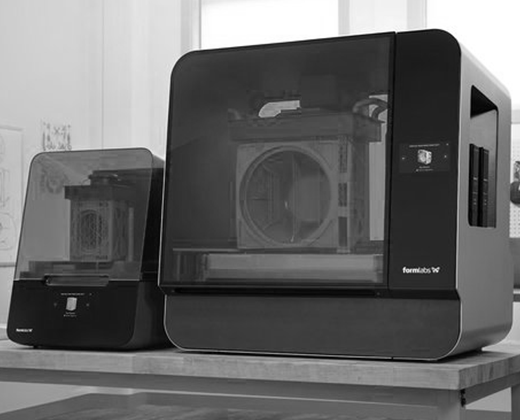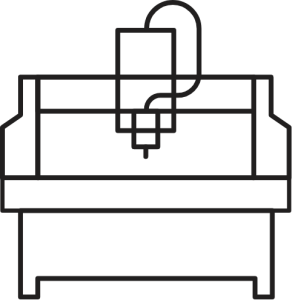Stereo Lithography
Stereo Lithography
Stereo Lithography
Stereolithography (SLA) 3D printing uses a laser to cure solid isotropic parts from a liquid photopolymer resin. When the process starts, the laser “draws” the first layer of the print into the photosensitive resin. Wherever the laser hits, the liquid solidifies. The laser is directed to the appropriate coordinates by a computer-controlled mirror. At this point, it’s worth mentioning that most desktop SLA printers work upside-down. That is, the laser is pointed up to the build platform, which starts low and is incrementally raised. After the first layer, the platform is raised according to the layer thickness (typically about 0.1 mm) and the additional resin is allowed to flow below the already-printed portion. The laser then solidifies the next cross-section, and the process is repeated until the whole part is complete. The resin that is not touched by the laser remains in the vat and can be reused. Stereolithography (SLA) 3D printing uses a laser to cure solid isotropic parts from a liquid photopolymer resin. When the process starts, the laser “draws” the first layer of the print into the photosensitive resin. Wherever the laser hits, the liquid solidifies. The laser is directed to the appropriate coordinates by a computer- controlled mirror. At this point, it’s worth mentioning that most desktop SLA printers work upside-down. That is, the laser is pointed up to the build platform, which starts low and is incrementally raised. After the first layer, the platform is raised according to the layer thickness (typically about 0.1 mm) and the additional resin is allowed to flow below the already-printed portion. The laser then solidifies the next cross-section, and the process is repeated until the whole part is complete. The resin that is not touched by the laser remains in the vat and can be reused.

Advantages Of Stereo Lithography

Standard resin can be used to achieve astonishing detail and high-quality output without comprising strength. Engineering resins is formulated to produce functional prototypes to reduce costs, iterate faster bring better experience to market. Jewelry resin is ideal for impressive concept models and manufacture distinctive pieces with sharp resolution and the best surface finish on the market, from idea to fitting to casting. Dental resins enable high precision, low-cost digital production of a range of dental products in-house, including surgical guides, orthodontic models, retainers and aligners.








